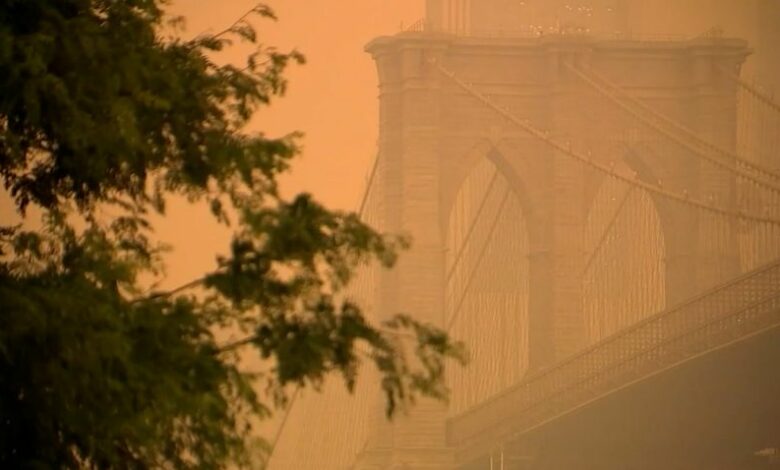
Emergency department visits for asthma in the United States were 17 percent higher than expected when wildfire smoke occurred, according to a new study published Thursday by the US Centers for Disease Control and Prevention.
From April through August, smoke originating from wildfires in Canada affected most of the neighboring regions of the United States. During that time, millions of people in the US were under air quality alerts as smoke swept through the Midwest and East Coast.
The study’s researchers, from CDC and other US institutions, analyzed data from the National Syndromic Surveillance Program on the numbers and percentages of asthma-related emergency department visits that occurred in the United States on days with wildfire smoke compared with days without wildfire smoke during April 30 to August 4.
Wildfire smoke days were those when concentrations of particulate matter — a mix of solid particles and liquid droplets found in the air that are generally 2.5 micrometers in diameter or smaller — triggered an Air Quality Index of 101 or higher, meaning the air quality was considered “unhealthy” for people with sensitivities. The Air Quality Index is the US Environmental Protection Agency’s index for reporting air quality.
The researchers found that asthma-related emergency department visits were 17 percent higher than expected during the 19 days in the data when wildfire smoke occurred in the US.
When the researchers analyzed the data across various regions of the country, they found that the region encompassing Delaware, District of Columbia, Maryland, Pennsylvania, Virginia and West Virginia experienced five wildfire smoke days, the highest total amount for any region.
New Jersey and New York, as well as parts of the Midwest — Illinois, Indiana, Michigan, Minnesota, Ohio and Wisconsin — experienced a total of four wildfire smoke event days.
New Jersey and New York experienced the largest increase in asthma-associated emergency department visits, the researchers found.
“Changes in asthma-associated emergency department visits during and after periods of wildfire smoke can be used by public health communicators, clinicians, policymakers, and the public to monitor and reduce exposure to wildfire smoke for persons with asthma,” the researchers wrote.
From June 1 to 14, a total of 1,310 asthma-associated emergency department visits were identified in New York, according to a separate paper, also published Thursday by the CDC.
In that paper, researchers from the New York State Department of Health and CDC found that, compared with the average number of emergency department visits during June 1 to 5, asthma-associated emergency department visits on June 7 increased 81.9% statewide.
“Children and non-Hispanic Black or African American persons disproportionately experience asthma exacerbations necessitating emergency care; extreme weather events might worsen these health inequities,” the researchers wrote in their paper. “It is essential that public health responses prioritize strategies that reach these populations and promote health equity.”
Over the last several months, wildfires in Canada and in Hawaii have had significant impacts on health.
Earlier this month, US Department of Health and Human Services Secretary Xavier Becerra declared a public health emergency for the state of Hawaii to address the health impacts of the wildfires there.
Poor air quality, like what is associated with wildfires, “causes problems for people who have asthma or allergies almost immediately if they’re outside for any given length of time,” said Dr. Aida Capo, a pulmonologist with Hackensack Meridian Palisades Medical Center in New Jersey, said in June.
“This air is particularly dangerous to the very young, the elderly and pregnant ladies. So it is recommended that they do not spend any time outside,” she said.
For people with asthma, allergies or heart problems who may have to go outside, “one of the recommendations for people who have asthma is to use their rescue inhaler 15 minutes before going outside into this type of air quality,” Capo said. “If you have any type of illness — whether it be asthma, allergy or cardiovascular — that you are under treatment and you have a doctor and if you use your medicines, you can decrease your risk of worsening disease in this type of air quality.”
CNN’s Jen Christensen contributed to this report.




